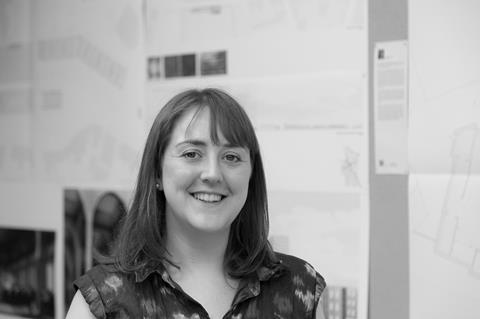Eleanor Jolliffe is in Rome for the next three months, looking to learn lessons from its historic of tall buildings

Height is a complex typology. It is tricky to design and engineer, and shaped not only by the laws of physics but by the shifting dynamics of power and money. In both my architectural practice and personal context high rise buildings appear all too often. Height isn’t a typology I am either wholeheartedly in favour of, or wholeheartedly against.
I live in a residential tower block, I see them being built all around me, I am working on the delivery of three. Living in London and Shanghai I have seen both the failure and urban blight of poorly planned residential towers, but have experienced the cultural, social and economic advantages that can result from high density.
The issue is too complex to be understood in a single article, or shrugged off dismissively as so many in the UK do: ”I’m not a fan of those tower block monstrosities”. Both the joy and the curse of high buildings is their expansiveness- in floor area, volume and in their ability to have ideologies projected onto them.
And height, perhaps above all typologies, beckons to the creative narcissist in us most strongly
The solidity and apparent permanence of ‘architecture’ has long appealed to both its practitioners and its patrons. As an art form, a profession or a hobby it beckons to the creative element in us that wishes to ‘play God’ with the world around us.
And height, perhaps above all typologies, beckons to the creative narcissist in us most strongly. It represents humankind’s attempts to reach the divine- the pinnacle of its collaborative efforts. The tale of the tower of Babel is perhaps most foundational tale in humankind’s wrestling with height.
From the Bible Genesis Chapter 11 (though similar tales appear in many religious and cultural foundational texts): “Then they said, ’Come, let us build ourselves a city and a tower with its top in the heavens, and let us make a name for ourselves’… The Lord came down to see the city and the tower, which mortals had built.
”And the Lord said, ’Look, they are one people, and they have all one language, and this is only the beginning of what they will do; nothing that they propose to do will now be impossible for them.’… So the Lord scattered them abroad from there over the face of all the earth, and they left off building the city.”
Height is alluring, unsettling and slightly otherworldly
Whether actual building or persuasive metaphor it seems likely that the moral or myth behind the Tower of Babel would not have been so potent had it been about a bungalow. Height is alluring, unsettling and slightly otherworldly- by building high we know we are reaching close to the limits of our collective ability- which is perhaps why the power of height is so potent.
As readers may know, I have recently moved to Rome to study its medieval towers- as 2023’s awardee of the British School at Rome’s Scholarship in Architecture. It was only recently that I heard of Rome’s towers. I had heard of San Gimignano, I had even been aware of some of the history of towers in medieval Florence and Bologna- but not of those in Rome.
Towers dominated the skyline of medieval Rome, with some authors suggesting up to nine hundred individual towers. They were largely conceived by aristocratic families for purposes of either defence or display- and often a combination of the two. Some have been absorbed by Rome’s contemporary urban fabric; others were damaged or demolished by disasters both natural and human in origin.
I don’t know yet what the three months in Rome will lead me to uncover
Subtler remains can be found though- in Siena, for example, some of the administrative district boundaries of the city are the remains of the boundaries of power between warring noble families- marked by their mansions and towers. It seems more than likely that such a proliferation of towers has left its mark on contemporary Rome, some of which I hope to discover for myself.
As such my column for the next few months will track some of my findings and experiences in Rome. I hope you will enjoy the departure from my more usual musings on architectural practice. For those who are interested I will also be endeavouring to send out a more informal and regular (free) email note on life in Rome and at the British School which you are very welcome to sign up for at londonarchitect.substack.com.
I don’t know yet what the three months in Rome will lead me to uncover. It may simply result in an intellectually interesting study of medieval urbanism. However, I hope it has more teeth than that. I hope that a study of this particular expression of towers and their latter impact may be able to contribute to contemporary discussions around high density, urban form, height and heritage. I am hopeful simply because height is too potent to be entirely benign.
Also read >> Eleanor Jolliffe awarded British School at Rome scholarship
















No comments yet